"Excelling all in artistic quality, painting people beyond the physical form." This was the praise by renowned contemporary scholar Qian Zhongshu for artist Fan Zeng's paintings. "He said that Fan Zeng's paintings are of the highest quality, exuding an ethereal aura and transcending the physical form, where the concrete image carries an external spirit," Fan explained.
26:24
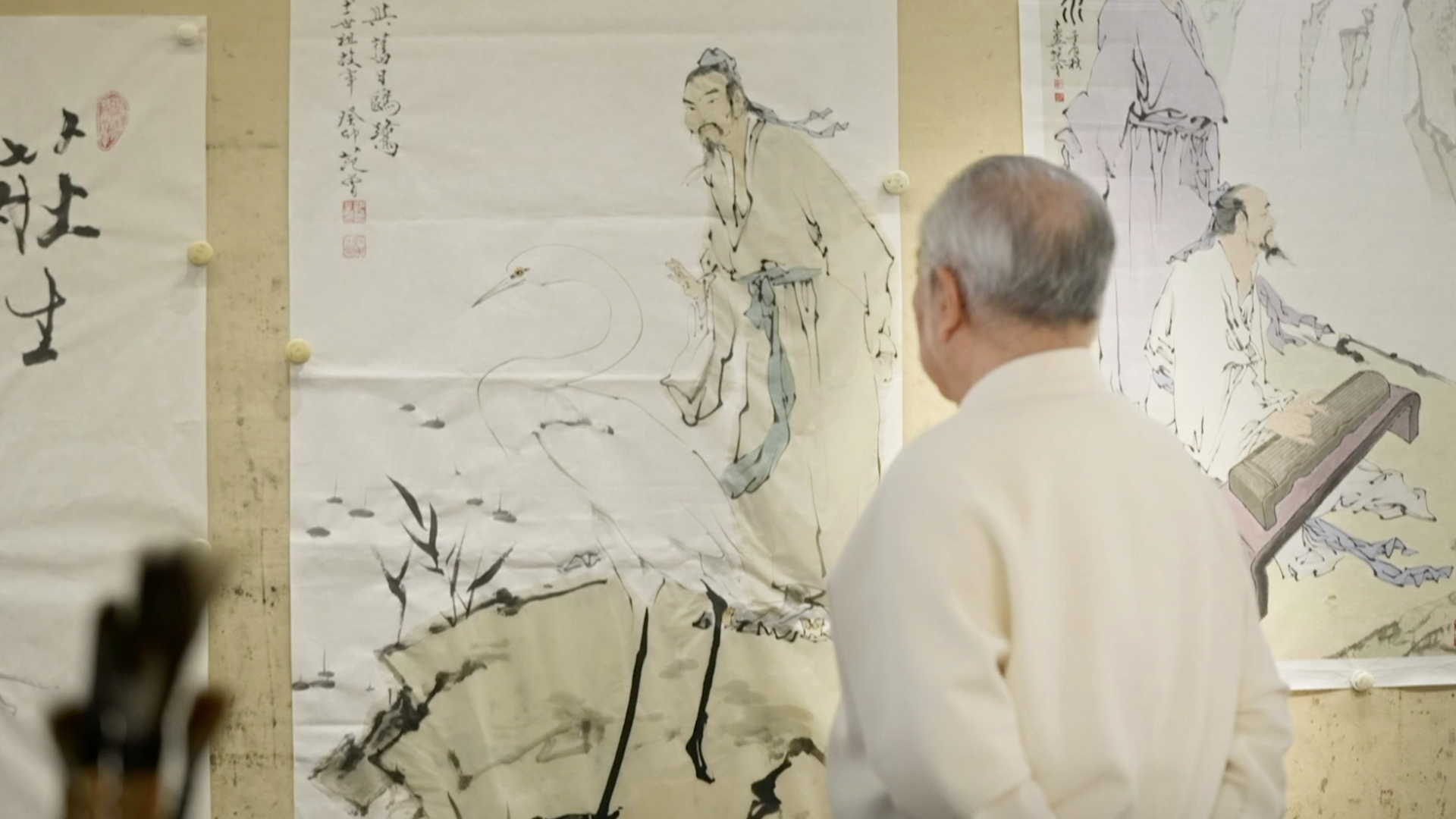
Born in 1938 in Nantong, Jiangsu, Fan Zeng grew up in a well-known literary family, with many of his ancestors being renowned for writing poems and calligraphy. As the 13th generation descendant of the Fan family lineage, Fan Zeng inherited the calligraphy and poetry traditions from his father, Fan Ziyu, and more than that. "My father graduated from the Shanghai Academy of Fine Arts, so besides poetry and calligraphy, he also taught me to paint from an early age. I drew with crayons, pencils and chalk on walls. This sparked my interest from a young age," he recalled. When Fan Zeng was 13 years old, he was admitted as the youngest member of the Nantong Art Association.

Chinese painter and calligrapher Fan Zeng. /CGTN
Chinese painter and calligrapher Fan Zeng. /CGTN
Years later, he was enrolled by Nankai University in Tianjin, majoring in history. Out of his strong passion for painting, he then transferred to the Central Academy of Fine Arts in Beijing to study art history. Unfortunately, the department of art history at the Central Academy of Fine Arts was dissolved after a year. So, he chose to study traditional Chinese painting. In his words, "Life has many coincidences."
"The professors at that time were the most distinguished painters in the Chinese art world, such as portrait painter Jiang Zhaohe, freehand brushwork painter Li Kuchan, landscape painter Li Keran, and freehand brushwork painter Guo Weiqu. These were all highly acclaimed masters at the time. Their brushwork and style have had a profound impact on me," said Fan Zeng as he recalled his studies at the university.
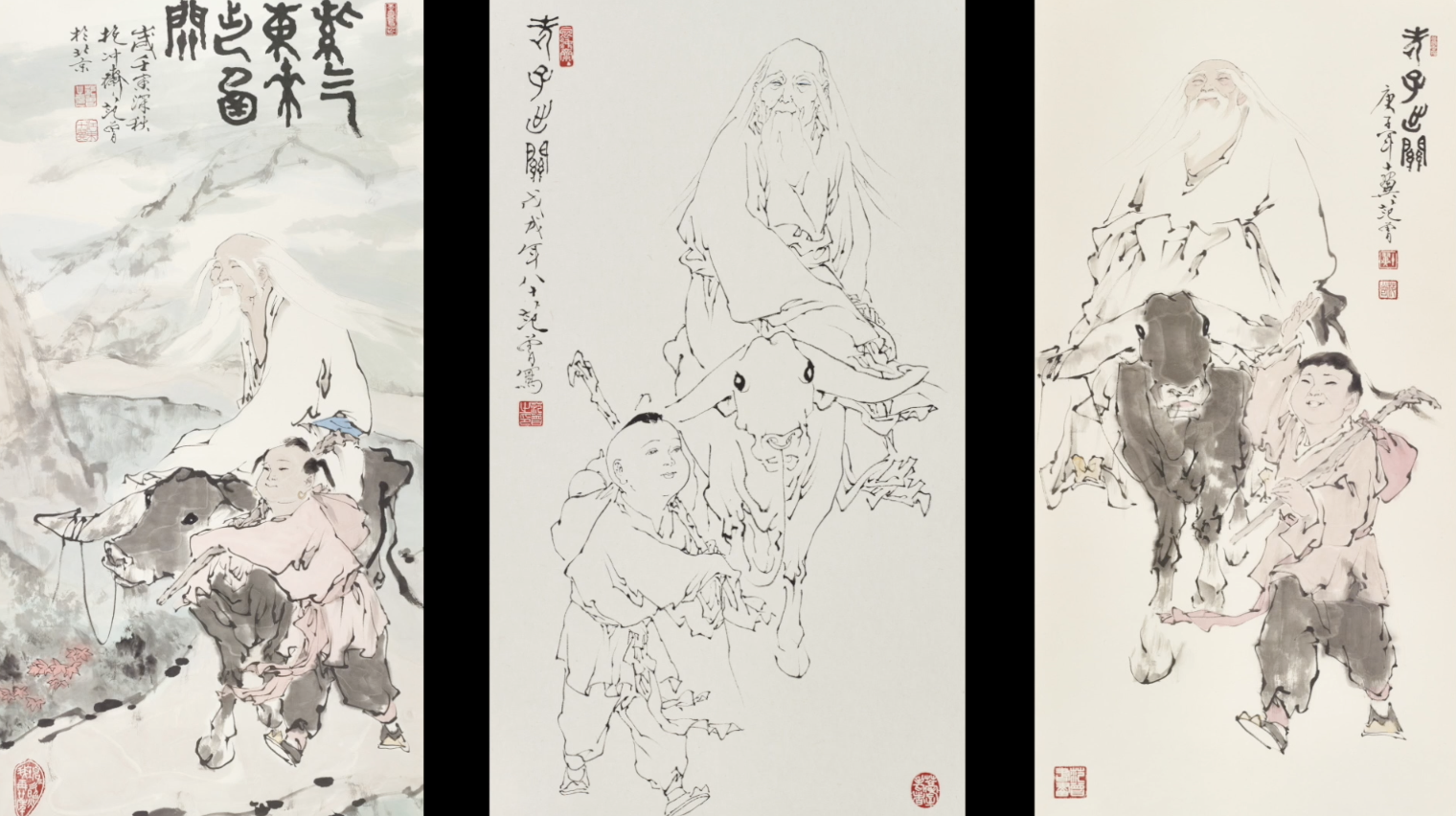
Details from a series of painting titled "Laozi Leaving Hangu Pass" by Fan Zeng. /CGTN
Details from a series of painting titled "Laozi Leaving Hangu Pass" by Fan Zeng. /CGTN
Laozi, the founder of Taoism over 2,000 years ago, is a sage that Fan Zeng admires the most. Many of his paintings reflect his personal way of communicating with Laozi. Throughout history, many literati have painted Laozi. "The Laozi I paint is my own interpretation. In Chinese philosophy, everything is viewed as a process – everything is fleeting, nothing remains stagnant. When I painted 'Laozi Leaving Hangu Pass,' these ideas were swirling in my mind. Consequently, the Laozi I depict is filled with ethereal qualities, including his demeanor. Sometimes he looks far into the distance, or gazes at the flowing water, projecting a sense of serenity," he explained.
While painting, Fan Zeng's brush strokes are swift and decisive, capturing the essence of his subjects with a mastery of calligraphic techniques and concise lines. Years of devoted study in classical philosophy, history and literature have imbued Fan Zeng's artwork with profound philosophical reflections.
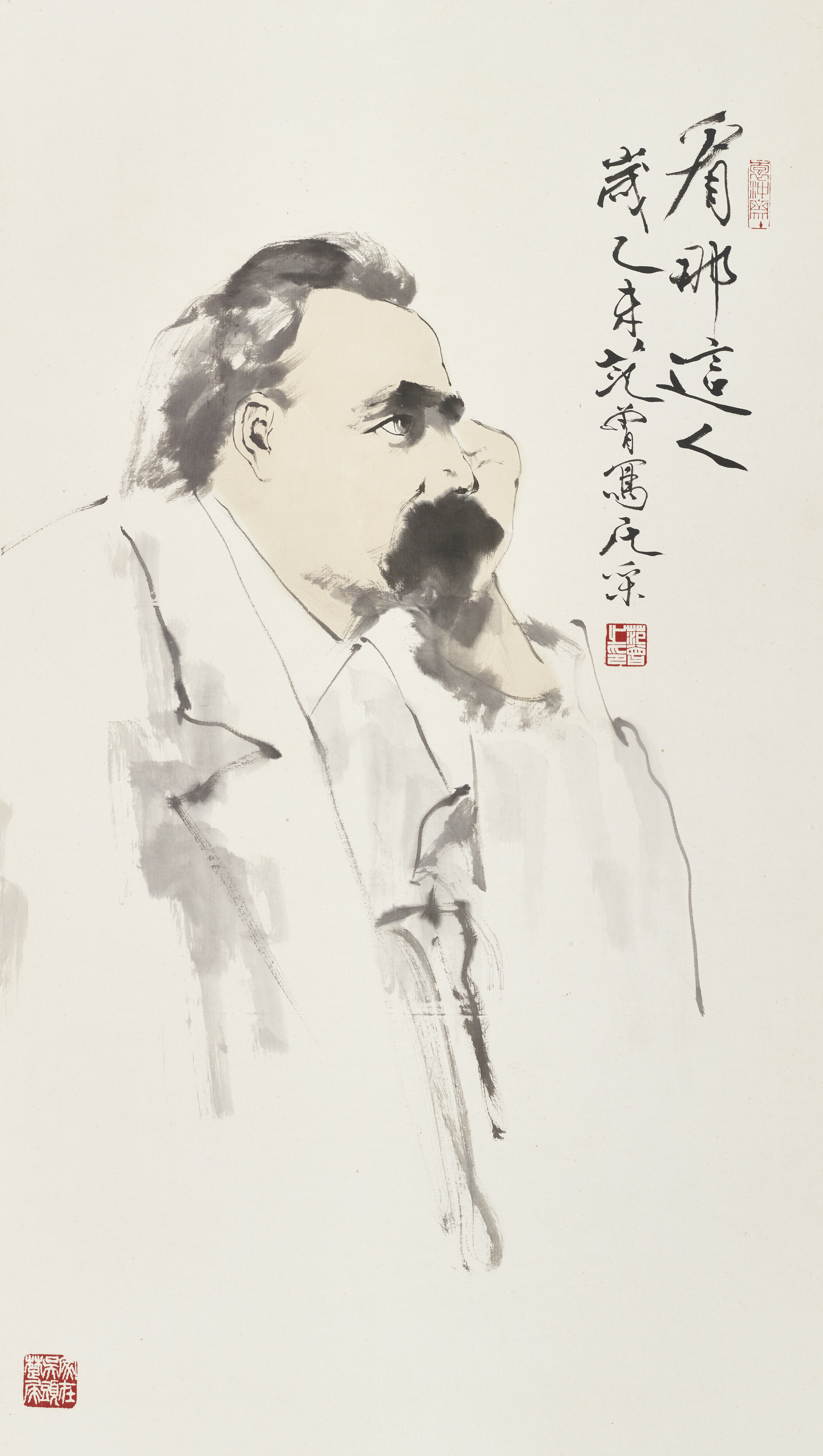
A portrait of Friedrich Wilhelm Nietzsche by Fan Zeng. /CGTN
A portrait of Friedrich Wilhelm Nietzsche by Fan Zeng. /CGTN
Apart from painting Laozi, he also brought to life Zhuangzi, another ancient Chinese philosopher, Friedrich Wilhelm Nietzsche, a philosopher from late 19th-century Germany, and scientist Albert Einstein with his brush. Different philosophical views from the East and West have left an important influence on Fan Zeng's art pieces. He believes there is a shared essence of humanity across different philosophical views and he draws nourishment from different painting methods.
He portrayed Nietzsche's childlike spirit and depicted him with "a wise gaze and a touch of neuroticism." For Einstein, Fan Zeng detailed, "I started drawing from his left eyeball, then the right one. The distance between the two eyes must be precise. Then I drew the nose, the corners of the mouth, and the nasolabial groove. This requires skill in realistic painting and traditional Chinese line drawing because you can't revise any of the strokes."
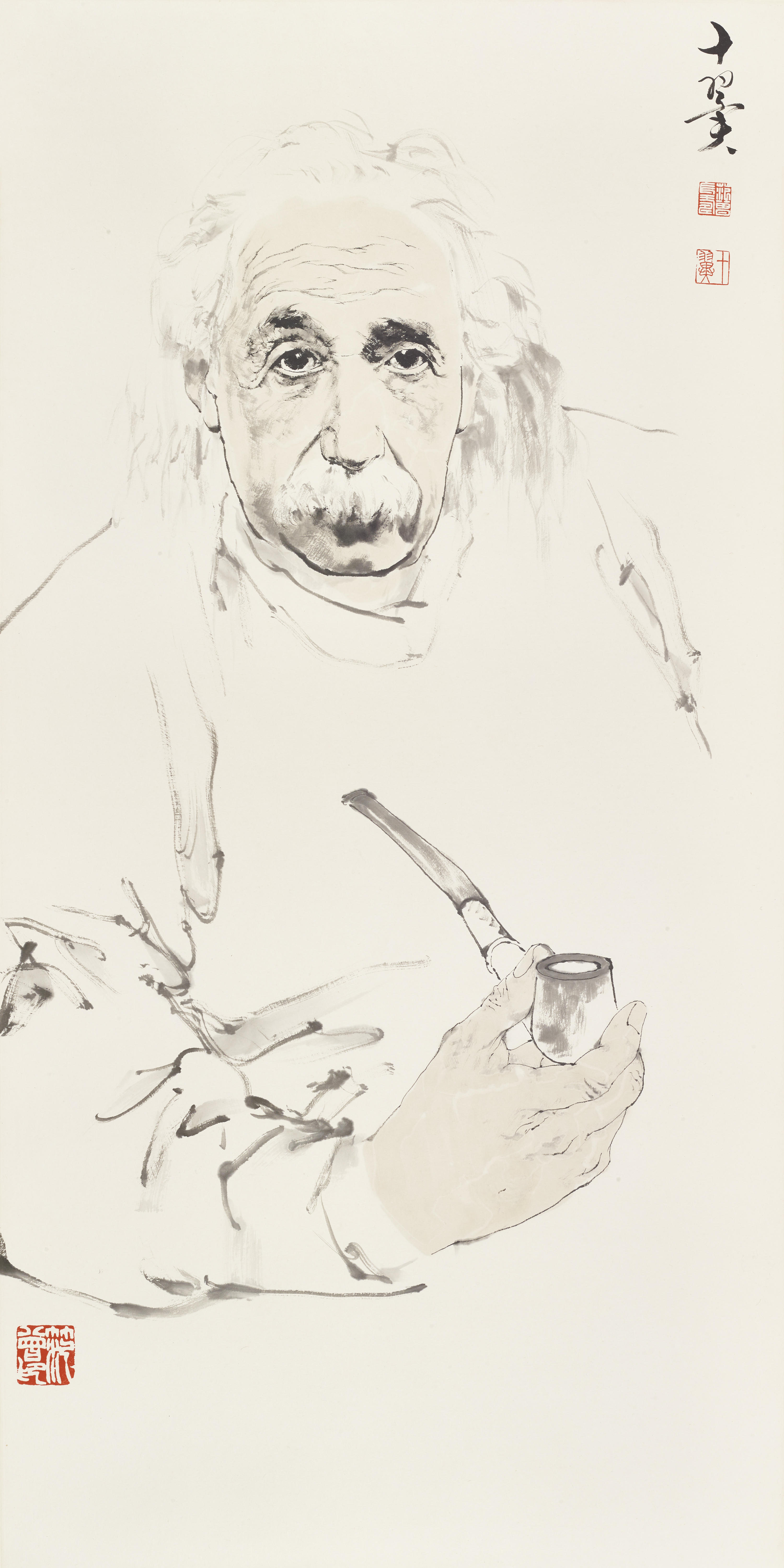
A portrait of Albert Einstein by Fan Zeng. /CGTN
A portrait of Albert Einstein by Fan Zeng. /CGTN
Fan Zeng's artworks first gained international recognition during an exhibition held in Japan in the late 1970s, when the Beijing-based painting and calligraphy studio Rongbaozhai held a comprehensive exhibition at the Seibu Department Store in Japan. "Fan Zeng's works were on display, and they caused a sensation in Japan," said Zhao Dong, executive director of Rongbaozhai.
In 2015, Fan Zeng held an exhibition at the Complesso del Vittoriano in Rome, Italy. Showcasing his masterpieces spanning nearly 30 years, the displays were warmly received by the Italian public. Italy's President Sergio Mattarella awarded Fan the title of Commander of the Order of Merit of the Italian Republic.
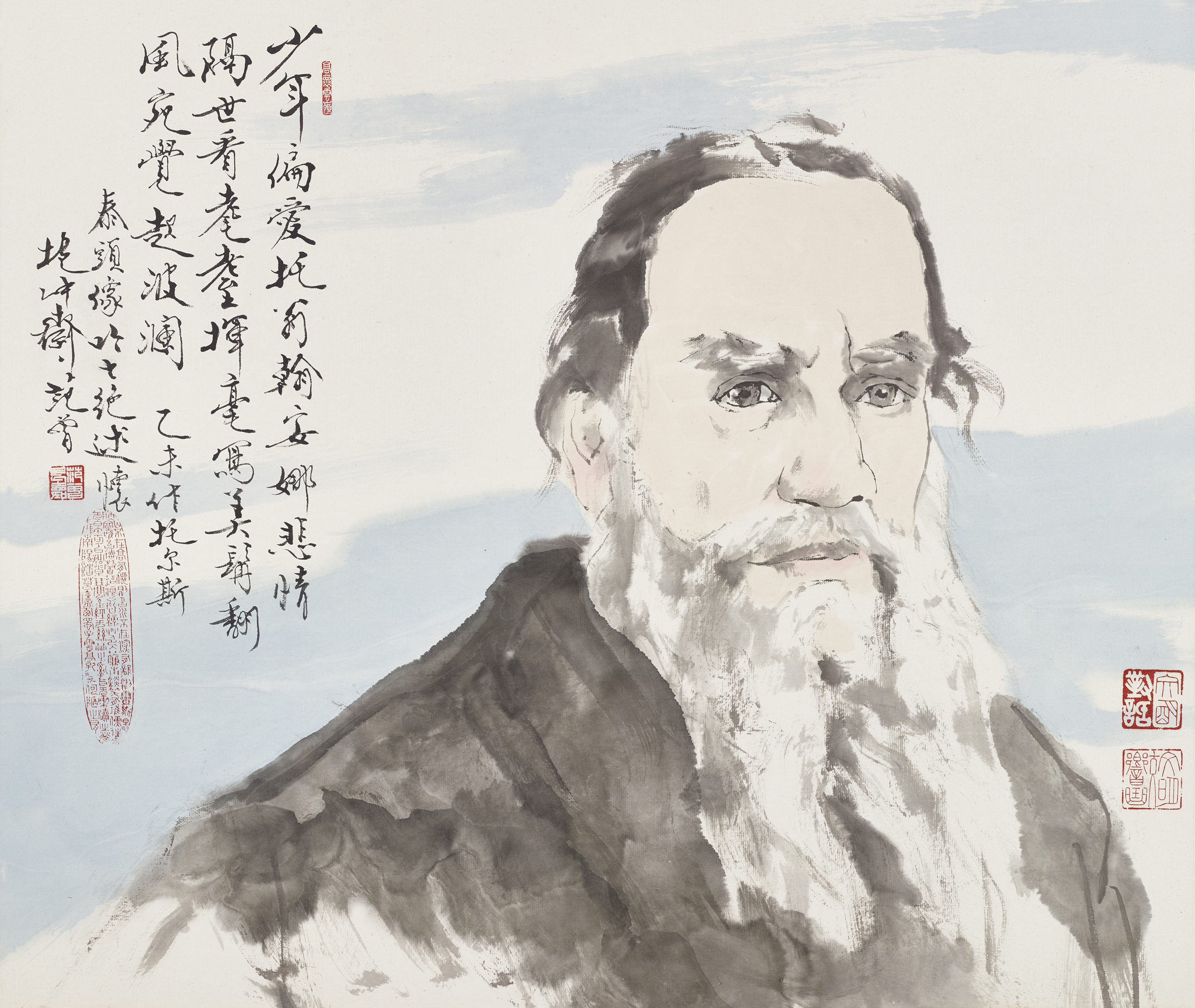
A portrait of Russian novelist Leo Tolstoy by Fan Zeng. /CGTN
A portrait of Russian novelist Leo Tolstoy by Fan Zeng. /CGTN
With work establishing a profound connection with the beauty of Chinese ink and wash painting, Fan Zeng's artistic influence resonates with people from different civilizations. The list of honors and awards he has received is rather long.
Now in his eighties, besides creating calligraphy and paintings, he said the greatest joy for him is teaching his grandchildren to recite poetry and composing poems with his students. He believes that successive generations of inheritance allow ancient wisdom to transcend time and remain forever fresh.